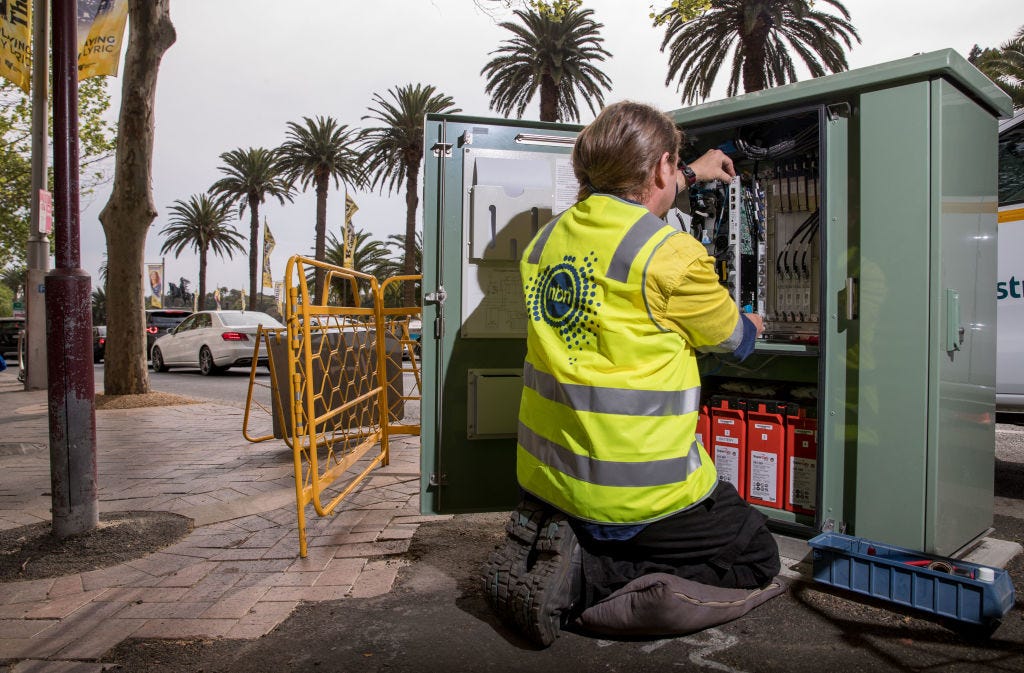[ad_1]

Image: Cole Bennetts/Bloomberg via Getty Images
Across the December quarter, the National Broadband Network carried less purchased capacity than it did previously, all because discounts offered by the company responsible for running the network ended.
At the end of 2021, total CVC capacity on the network was 23.4Tbps, down 2.5%, and average capacity per user dropped 3.5% to 2.7Mbps, according to the latest NBN Wholesale Market Indicators Report from the Australian Competition and Consumer Commission (ACCC).
Broken down by state and territory, the ACT and Victoria had the highest decreases at 15% and 12%, respectively, with NSW shrinking by 6% as well. Headed in the other direction were the Northern Territory with an 11% rise, followed by Queensland and South Australia on 10% increases, Tasmania on 6%, and Western Australia on 4%. The ACCC said the reductions might have been due to COVID-19 restrictions easing in the eastern states.
As the promotion ended, over 150,000 connections dropped out of the 100Mbps plans, over 2,800 full fibre lines dropped out of the 500-1000Mbps/50Mbps speed tier, and the various 50Mbps tiers gained over 180,000 connections. It has been a similar story previously with NBN discounts coming and going, with users sometimes selecting to move plans, and other times telcos ending free upgrades to users.
Not for the first time, the outcomes of the NBN were dictated by economics, not technology.
Speaking at Senate estimates last week, ACCC chair Rod Sims said the network should be treated as a sunk cost.
“Now that [the NBN’s] built, I think it’s appropriate to treat its cost as sunk and therefore, what matters for Australia is getting the best use out of the NBN,” Sims said.
“Obviously, NBN need enough cash going forward to cover their investment, [it] would be absurd not to do that. But I wouldn’t be personally hung up on getting a commercial return on every last dollar spent because I think that’s just bad economics.
“What’s the best use we can make of the NBN should drive it provided they’ve got enough money to do all the things they have to do.”
Elsewhere in its report, the ACCC said small providers were starting to see gains as the majors dropped by a few points of a percent.
“We are glad to see continued growth from smaller NBN providers. Their presence in the market keeps pressure on the big four of Telstra, TPG, Optus, and Vocus to maintain a high quality, competitive service,” ACCC Commissioner Anna Brakey said.
“Some smaller providers are offering consumers different options to meet their specific needs, such as tailored plans and discounted pricing options, network performance graphs, Australia-only call centres and gamer-optimised plans.”
Of the smaller providers, Aussie Broadband grew from 5.1% to 5.6%, representing a gain of 46,000 customers.
Related Coverage
[ad_2]
Source link

